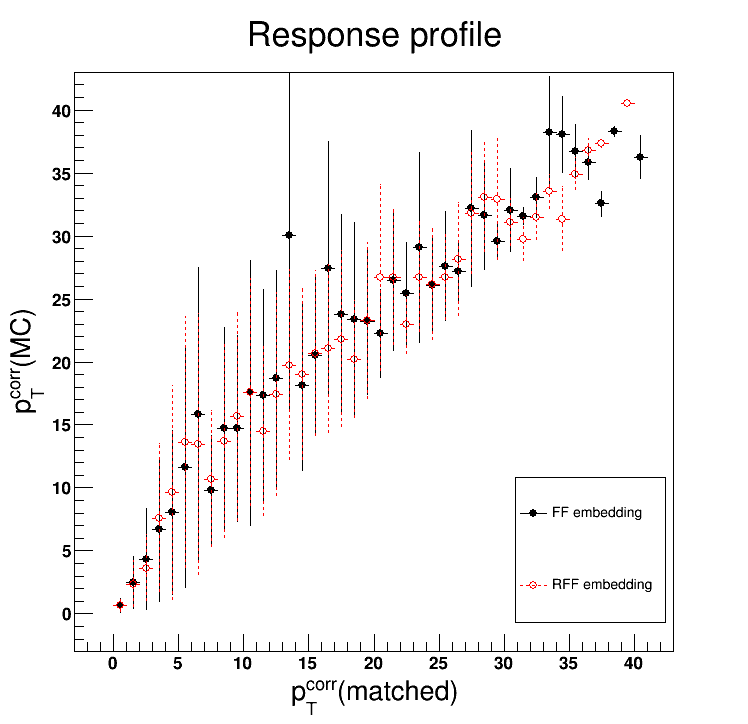Update 05.14.2018 -- Run 9 Embedding: Response Matrix Check
Yesterday I took my first stab at calculating the response matrix for R = 0.3 charged jets using the Run 9 dijet embedding:
https://drupal.star.bnl.gov/STAR/blog/dmawxc/update-05132018-run-9-embedding-response-matrices
Now we want to make sure those are reasonable. Below I compare the two embedding matrices (FF and RFF) against each other and against a Pythia reference. The Pythia reference is a test I did a while back; if I recall correctly, it was created from pi0-triggered R = 0.3 charged jets with an 87% efficiency (see note below) applied to mock-up the effect of the TPC. As far as I know, no smearing was applied in creating the detector-level Pythia jets... In all the plots below, the response matrices have been normalized properly (this wasn't so in yesterday's post). The labels on the matrices' axes are the same as yesterday.
The FF and RFF seem to agree well. It's a bit hard to gauge how the ratio looks in this format, so I would focus on the profiles overlaid over each other.


And the RFF response appears to agree with the Pythia reference as well. It seems that the region 'pTmatched > pTmc' is more populated in the embedding matrix than it is in Pythia. However, I would suspect that that might have to do with the lack of smearing applied to the Pythia reference.


Note: the efficiency applied to the Pythia reference is pT-dependent. It's defined by the function 'eff(pTtruth) = 0.87 * (1 - exp(-4 * pTtruth))' where the 0.87 corresponds to the 87% quoted above.
Update [05.18.2018]: I forgot to specify the QA cuts applied to the jets in the above matrices. Both particle- and detector-level jets have to satisfy:
- areaJet > 0.2
- |etaJet| < 0.7
- pTjet > 0.2 GeV/c
Where 'pTjet' indicates the raw reconstructed jet 'pT', no corrections have been made for the UE or JES.
- dmawxc's blog
- Login or register to post comments
